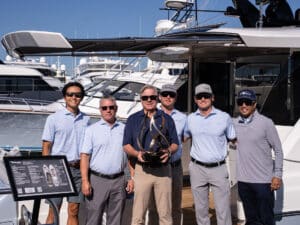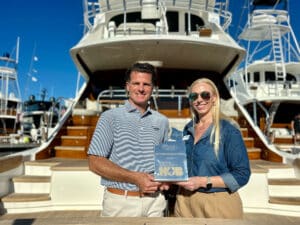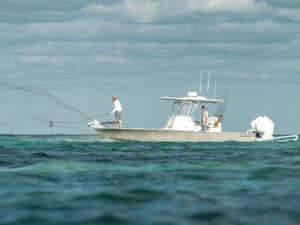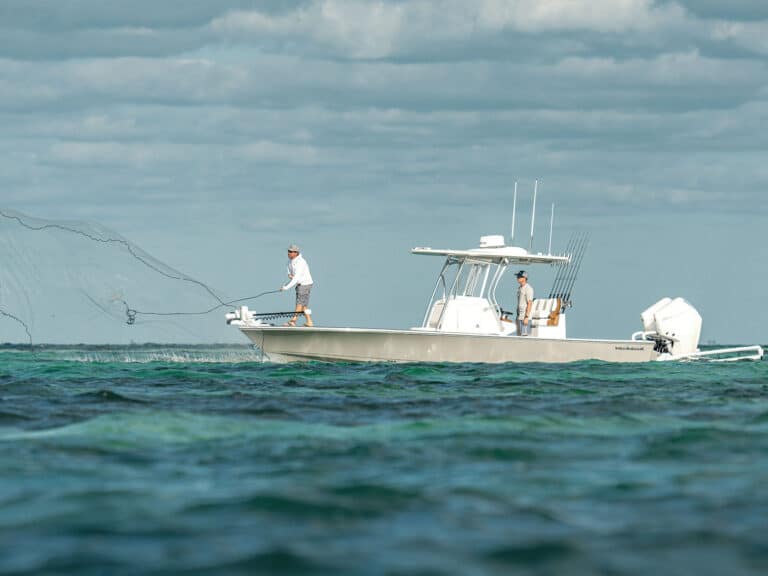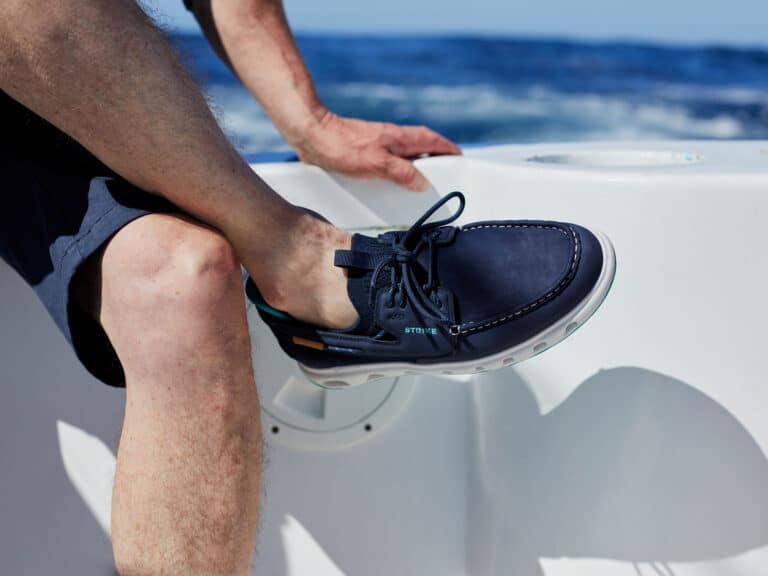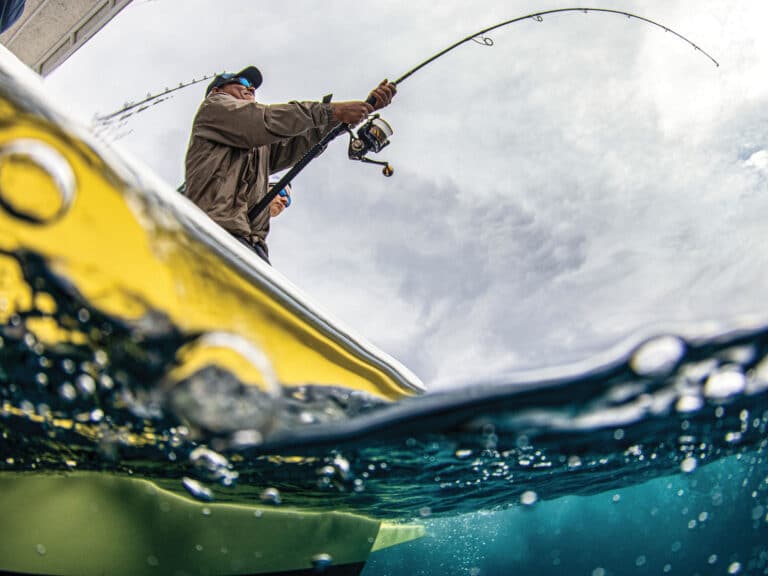
Right there, about 100 feet off the bow, there’s a big school of yellowtail — CAST NOW!” yelled our pangero, Joel. At least, that’s what I think he said. I understand very little Spanish, even less when words are coming fast and furious, especially when distracted by a half-acre of boiling fish and crashing birds.
Fortunately, the word “cast” is universally understood by anglers worldwide — provided the speaker gestures with sufficient flourish. So, that’s what I did. The Salas 7X jig arced a path and splashed down about 20 feet past the surface melee. After waiting a few seconds for the lure to sink, I threw the reel in gear and began a steady wind back to the boat. I watched as the lure — a class of lightweight metal casting jigs known as “light iron”— kicked wildly from side to side a foot beneath the surface. About 10 turns of the handle later, the jig stopped cold, the 8-inch, mint-green lure disappeared in a giant swirl of silver, green and yellow.
For anglers who love throwing surface lures to hard-fighting members of the amberjack family known as California yellowtail, there is probably no better destination than Isla de Cedros — the self-proclaimed yellowtail capital of the world. Over the course of four days fishing with Cedros Sportfishing (cedrossportfishing.com), our panga repeatedly pulled up on large swaths of water whipped into a froth of boils, birds and fleeing baitfish. And while yellowtail represented our main target, our jigs were also devoured by big calico bass, double-digit sized bonito, and the biggest Pacific barracuda any of us had ever seen.
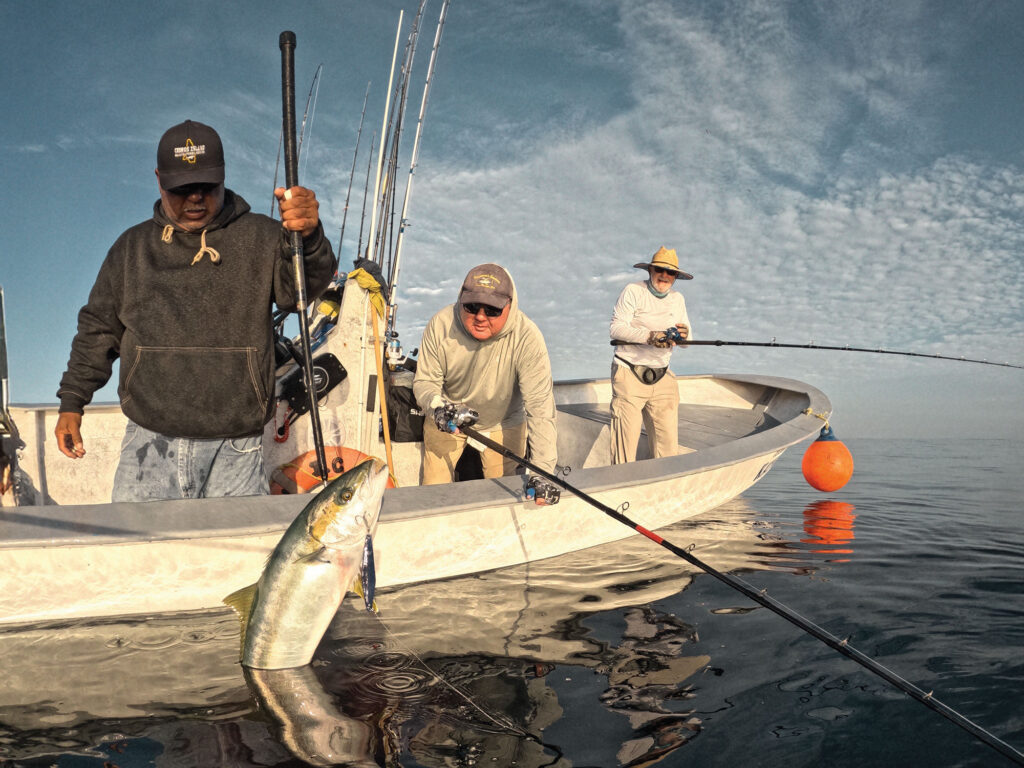
Remote Waters
There are several reasons why fishing here is so consistently great, starting with the island’s remote location. Roughly 310 miles south of the United States/Mexico border and 40 miles off Guerrero Negro on the Pacific coast of Baja California, Cedros Island takes some effort to reach. In the past, this island was a main destination on five- to seven-day long-range party boat trips out of San Diego, California. However, the island was designated a Mexican Biosphere Reserve in 2016, meaning its abundant marine resources are managed for sustainability and “only to be utilized for the benefit of the local community.”
Today, anglers can book with a handful of small sportfishing lodges based on the island that offer five- or six-day all-inclusive packages combining round-trip air travel from the Tijuana, Mexico, airport, lodging, meals, non-alcoholic beverages, all necessary permits and paperwork, fishing with a local guide aboard open pangas, and expert fish processing — all for one flat fee. The only extras are tips and anything you might buy while on the island.

The Panga Experience
Having fished these waters from the deck of a 95-foot luxury long-range party boat, I prefer the up-close-and-personal vibe of fishing from an open panga — the intensified sights and sounds of boiling fish, crashing birds and shoals of bait ripping the surface of the water to shreds. You feel as if you’re watching an episode of Blue Planet, adding a spiritual dimension to the physical acts of casting, cranking, and hooking fish.
Guests fish two or three anglers per boat. Working with the lodge manager and/or panga captain, they plan each day based on angling priorities. You may opt to focus on catching yellowtail (at least until you reach your five-fish daily limit), or work the kelp lines for calico bass, or do some of both over the course of the day. Depending on the season and conditions, Cedros can also kick out excellent California halibut and white seabass fishing. These species, along with giant sea bass (legal to take in Mexico) are often encountered while fishing kelp beds for calicos.
While fishing is excellent for many species, there’s no doubt that yellowtail and calico bass are the main attractions. Yellowtail 30 pounds and heavier prowl these waters in massive schools. Anglers addicted to catching yellowtail especially love catching them on jigs. When schools of yellows begin busting bait on the surface, they are prime targets for large light-iron models such as the Salas 7X, Tady 45, or JRI 4, retrieved just under the surface at a medium speed that maximizes the kicking action.
When yellows are feeding on bait schools suspended in the water column, dropping down heavier “yo-yo” jigs like the Salas 6X, Tady 9 or Tady 4/0 can prove deadly. Fish these by dropping them straight to the bottom and winding up toward the surface as fast as your arms can crank.
Whether light iron or yo-yo, the biggest thing to remember is to keep turning the handle when you get bit. This is easier said than done, as it’s instinctive to stop winding and set the hook when a fish grabs the lure. Doing this, however, will cause you to miss some fish. Instead, you want to keep winding until the fish begins pulling drag. Then you can lift the rod and put a bend in it.
There will be times when conditions aren’t favorable for jig fishing, and guides may recommend trolling large diving plugs or slow-trolling with big live mackerel. Both techniques are often done over rocky high spots. Guides recommend large 7/0 bait hooks, heavy 60- to 80-pound test line and heavy drags. These strong fish didn’t grow this big by being user friendly; they will literally rock your world if you give them the chance.
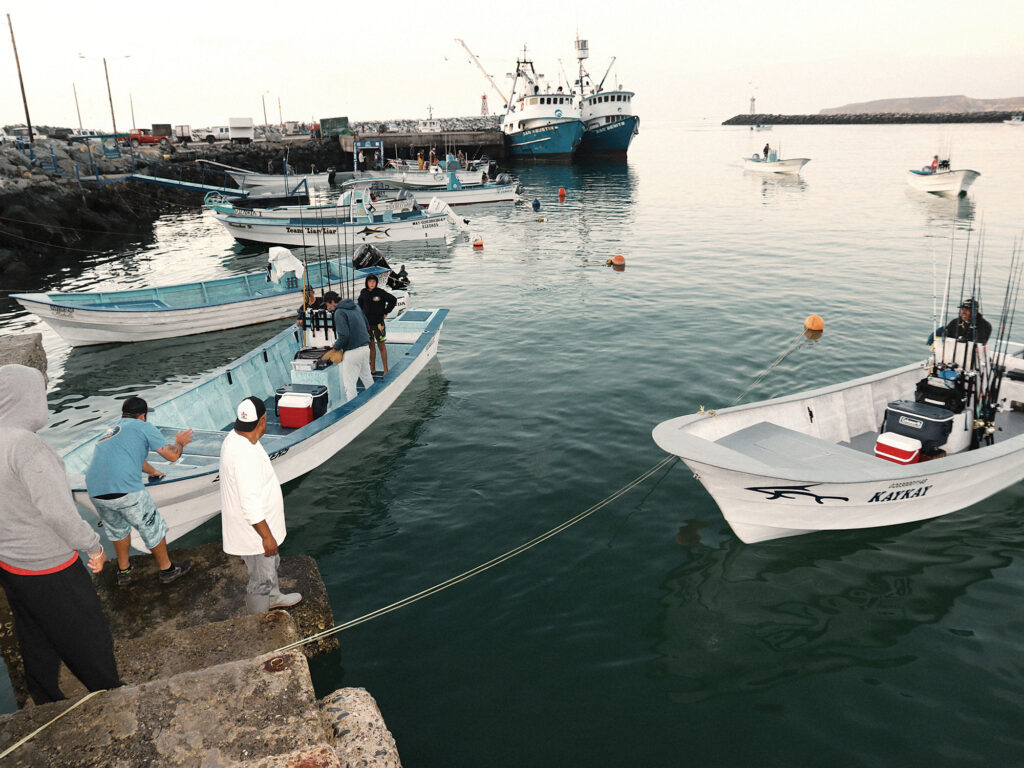
World-Class Bass
The other big draw at Cedros are calico bass, and the fishing here far exceeds anything available north of the border. Calicos from 7 pounds to benchmark double-digit models are common, and the fish can be so aggressive it’s not unheard of to catch two of them simultaneously on one multi-hook lure.
Calicos will also eat light-iron jigs. Yet, most die-hard calico anglers throw soft-plastic swimbaits of various types and sizes. Plastic paddle tails such as the Kicker PK-7 Pickle Kick are threaded on a weighted or weightless wide-gap weedless hook to avoid hanging in kelp. The key is working open casting lanes within the dense kelp forests. It’s while fishing the kelp that white seabass and halibut are often caught.
Read Next: How to Target California Yellowtail in Deep Water
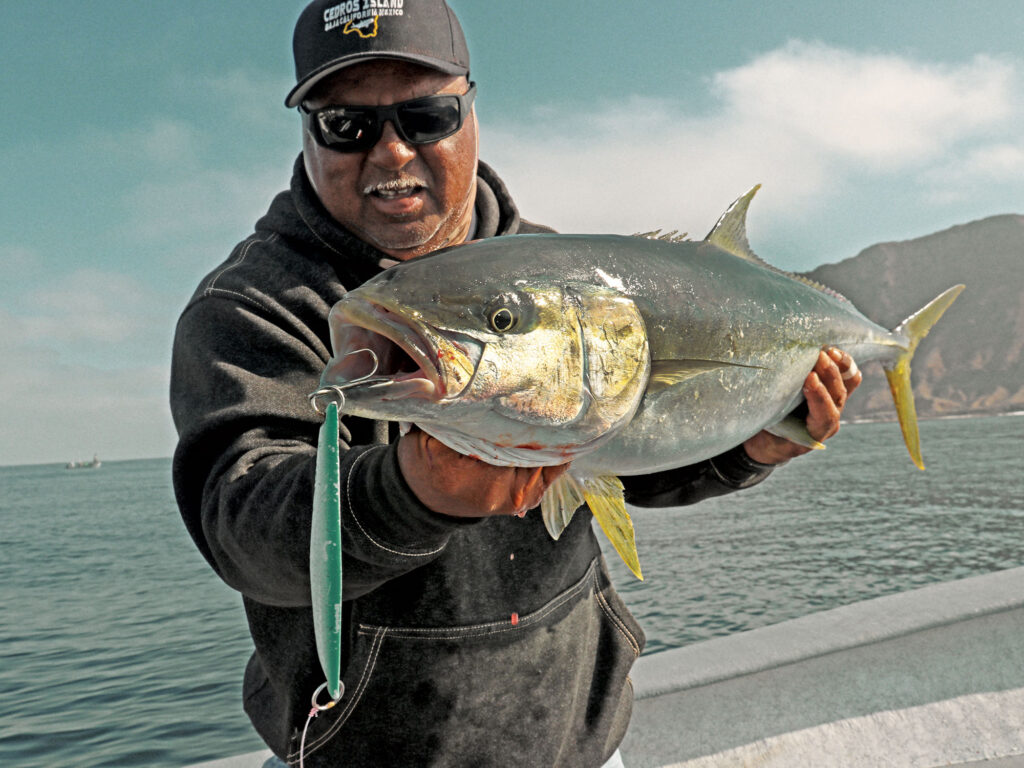
Easy Lodge Experience
I’ll admit to a case of nerves when I first headed down to the island with Cedros Sportfishing, but that went away once I saw how they’ve organized the process. Customers just unload their gear at the Cross Border Express (CBX) terminal in San Diego, park in the secure reserved lot, and follow a caravan of luggage carts to the security checkpoint on the US side. After transiting a 400-foot enclosed bridge that goes over the border, you emerge inside the impressively modern Tijuana International Airport. Here, a Mexican representative of the lodge meets you and guides the group through the process of Mexican Customs and Immigration. Your bags, tackle and rods are then taken and loaded on a 12-passenger Cessna Caravan for the roughly two-hour flight to the island.
Some anglers opt to jump in a panga that afternoon for a half-day of fishing, while others prefer to relax and prepare their gear for the first full day on the water. Anglers are rallied at 5 a.m. each fishing day for a hearty, hot breakfast. As you eat, your lunch order and fishing gear are transported and loaded onto your waiting panga. When you arrive back at the lodge after fishing, you’re treated to hot snacks on the patio, perfect for keeping your appetite at bay until the family-style dinner. Anglers who like to drink beer, wine or cocktails usually bring their own, as there are limited options on the island.
Each evening, the lodge staff fillets, vacuum packs and freezes your catch, providing a great finished product for the table. At the end of the trip, each guest’s fillets are placed in “loaner” soft-sided coolers for the flight home.
Each angler is limited to a total of 72 pounds of luggage and gear (excluding fishing rods, which are stacked in the aircraft’s center aisle after everybody is on board). Air crew take this weight limit seriously, as the island’s short clifftop runway leaves little room for error. The poundage of fish each angler can take home will be based on the total weight of the gear and passengers on the morning of departure.
If you’re ready to go the distance in pursuit of epic angling for California yellowtail, calico bass, white seabass, andmore off the rugged Pacific coast of Baja, Cedros Island awaits. It’s a short flight away, but you will feel like you’re a world apart. You’ll return with some tasty fillets and enough fish stories to last a lifetime.
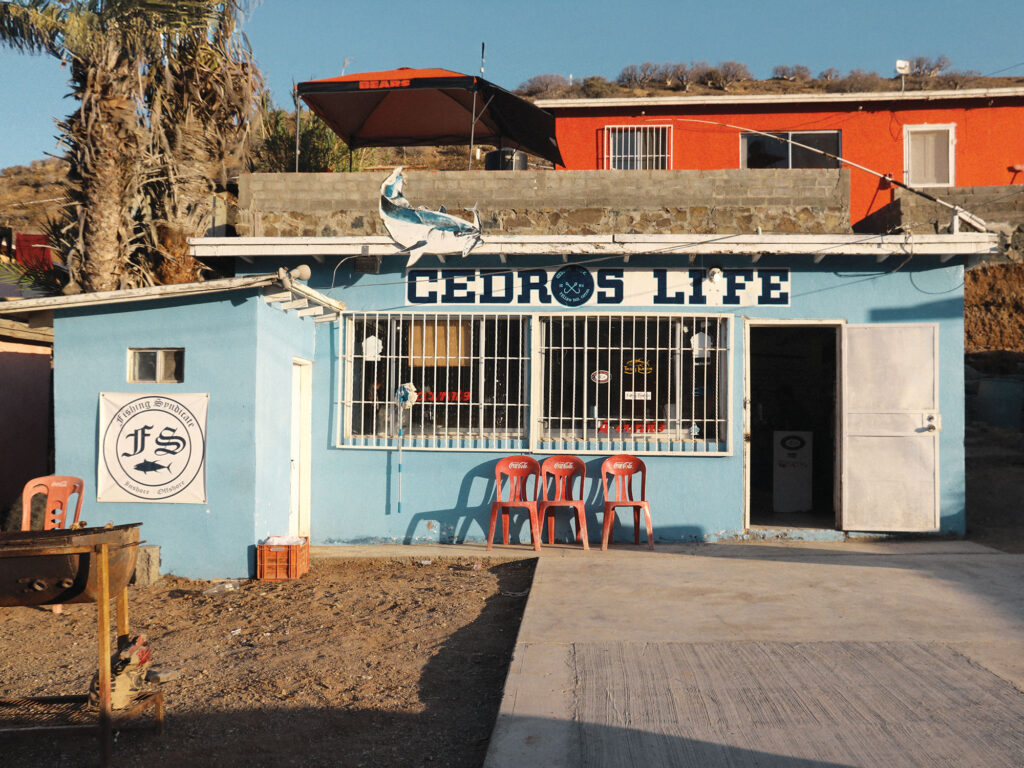
Book Your Trip
A fishing adventure with Cedros Sportfishing runs $3,050 for a five-day trip. The lodge also runs six-day trips for $3,350. You can book open spots (or charter the entire lodge with a group of 12) through cedrossportfishing.com. Learn more by calling the office at 619-772-7570 or email info@cedrossportfishing.com.
The season runs from May through October. Fishing for yellowtail, calico bass and other species is good throughout; trips in September and October provide shots at yellowfin tuna and dorado as an added bonus.
Sportboat Option
The San Diego-based sportboat Horizon (horizoncharters.com) offers a relatively new option for anglers wanting to fish Cedros Island. Starting in late October, the boat will run seven-day “Live-aboard Adventures” to the island, where anglers travel down by boat, fishing at least some of the time along the way for tuna and other offshore species. Once reaching Cedros, anglers eat and sleep aboard the “mothership” and fish each day with pangas and guides from the island. This should offer some advantages, like onboard live-bait tanks, the ability to carry more tackle, and being able to bring more fish home. The seven-day trip (versus five- or six-day trips when you fly to the island) accounts for the roughly 30-hour run each direction, as well as any fishing stops along the way. A seven-day Cedros trip aboard Horizon runs $3,675.


